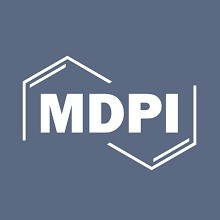
دانلود مقاله مدیریت منابع انسانی سبز: تحلیل کتاب سنجی
خلاصه
1. مقدمه
2. روش
3. نتایج
4. بحث
5. نتیجه گیری و جهت گیری های آینده
پیوست اول
ضمیمه B
منابع
Abstract
1. Introduction
2. Method
3. Results
4. Discussion
5. Conclusions and Future Directions
Appendix A
Appendix B
References
چکیده
علیرغم توجه فزاینده ای که مدیریت منابع انسانی سبز (GHRM) به خود جلب کرده است، این زمینه هنوز به طرز چشمگیری جوان است و وضوح مفهومی هنوز به دست نیامده است. یک بررسی کتابسنجی از GHRM از سال 2010 تا 2020 در Web of Science انجام شد و با استفاده از بسته نرمافزاری VOSviewer، نسخه 1.6.16 که توسط Van Eck و Waltman (لیدن، هلند) توسعه یافته بود، تجزیه و تحلیل شد. نتایج نشاندهنده رشد تصاعدی این موضوع است، اگرچه به نظر میرسد در مورد تعریف، مفهومسازی و اندازهگیری آن اتفاق نظر وجود ندارد. با توجه به توسعه مفهومی آن، به نظر می رسد GHRM در حال حاضر با مرحله دوم توسعه (ارزیابی و تقویت) مدل سه مرحله ای رایچرز و اشنایدر از تکامل سازه ها مطابقت دارد. به نظر می رسد تحقیقات آینده در جهت ایجاد موانع جداسازی GHRM از سایر موضوعات مدیریت منابع انسانی، تعریف شیوه های سبز و تعیین پیشایندها و پیامدهای GHRM باشد.
توجه! این متن ترجمه ماشینی بوده و توسط مترجمین ای ترجمه، ترجمه نشده است.
Abstract
Despite the growing attention which green human resource management (GHRM) has been gaining, the field is still remarkably young, and conceptual clarity is yet to be attained. A bibliometric review of GHRM from 2010 to 2020 was conducted on the Web of Science and analyzed using the VOSviewer software package, version 1.6.16 developed by Van Eck and Waltman (Leiden, The Netherlands). The results show the exponential growth of this topic, although there seems to be no consensus regarding its definition, conceptualization and measurement. Concerning its conceptual development, GHRM seems to currently fit the second stage of development (evaluation and augmentation) of Reichers and Schneider’s three-stage model of the evolution of constructs. Future research seems to point in the direction of establishing the barriers separating GHRM from other human resource management topics, defining green practices and determining the antecedents and consequences of GHRM.
Introduction
The economic growth of the last two centuries has represented prosperity and longevity for humanity. However, the impact of various industrial practices, reflected in pollution and the accumulation of waste and residues, is increasingly evident (IPCC 2018; Jackson et al. 2011). Climate change represents a new set of challenges, altering competitive and regulatory spheres, indirectly through global policy efforts to curb carbon emissions, and directly as a means of combating the unravelling consequences of extreme weather events (IPCC 2018). By invoking unprecedented changes in socio-economic systems, climate change makes it urgent for society to prepare and adapt in the face of new contingencies (Winn et al. 2011). With increasing regulatory and public pressure, more and more business entities are proactively implementing practices and strategic changes, such as investing in low-CO2 technologies and renewable energy, in order to transition to environmental sustainability (González-Benito and González-Benito 2006; IPCC 2018).
The multidisciplinarity required to reduce organizational environmental footprints challenges the vision that this theme is restricted to environmental sciences, causing new fields of study to emerge in the areas of social research and management (Shrivastava and Berger 2010). In this sense, several related topics have been increasingly emphasized: corporate social responsibility (CSR), environmental management (EM), business ethics, socially responsible consumption and sustainability strategies, among others (Schuler et al. 2017; Shrivastava and Berger 2010).
Conclusions and Future Directions
The bibliometric analysis of the literature produced between 2010 and 2020 highlights the importance of GHRM today as an expanding field, particularly from the second half of the decade. The purpose of GHRM is to actively participate in the creation of greener societal paths and respond to environmental and ecological issues from the organizational context. This HRM specialty refers to one of the most important challenges faced by humanity
By mapping the existing literature streams—implementation of GHRM as a strand of EM, consequences at the organizational level and consequences at the employee level— tracing their contributions and development in the last decade, and identifying the construct development stage, this paper has met its objectives. In short, the results obtained suggest that the implementation of green practices in organizations will be reflected in lower levels of environmental pollution and contamination. Despite the emphasis on the repercussions of GHRM at work, it goes beyond the labor sphere, since green environmental values are transferable from context to context, i.e., green behaviors applied at work are reflected in personal life and vice versa. The fact that the evolution of the construct has been going beyond a concept focused only on EM demonstrates the consideration of employees endowed with unique strategic value and their decisive role in organizational sustainability. The resource-based view (Barney 1991) is a theoretical contribution that points in this direction (Yusliza et al. 2017).
